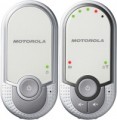Parent unit attachment
Parent unit mounting type — with some exceptions, they are designed to be carried with you all the time.
—
Neck strap. A strap that can be worn around the neck to carry the parent unit. This attachment is convenient because it does not depend on clothing (unlike a belt) and does not involve the hands (unlike a wristband).
—
Wristband. A wrist mount, similar to a wristwatch. Its advantage is that the parent unit is in view most of the time, simply put — it is most often in front of the eyes. This is especially important if you use light indication. On the other hand, the dimensions of even compact parent units are considerably larger than a wristwatch, which may cause some inconvenience.
—
Belt clip. Mounting on a belt is convenient in that it frees the hands. On the other hand, it puts forward certain requirements for clothing: it must have a place for attaching a clip and not be too light, otherwise the weighty parent unit will pull it off.
—
On the wall. This feature is useful if you have to sit in one place for a long time — for example, work at a computer: you can fix the parent unit in the most visible place. In baby monitors, mounting exclusively on the wall is practically never found; this option is in addition to one of the three above, most often to a belt clip.
It should be not
...ed that in fact, the convenience of mounting depends not only on the above features, but also on your personal preferences.Channels
The number of radio channels on which communication between baby monitors is provided. Multi-channel models (both digital and analogue, refer to "Communication standard") are more resistant to interference: with such problems, it is often quite enough to change the channel.
Operating time
Approximate amount of time the baby monitor parent unit can operate without recharging or changing batteries. The value is rather conditional, because in fact, it depends on many parameters: the selected volume, sensitivity, the number of alarms, etc. As a result, the actual operating time may differ — usually downward relative to what is recorded in the characteristics.

